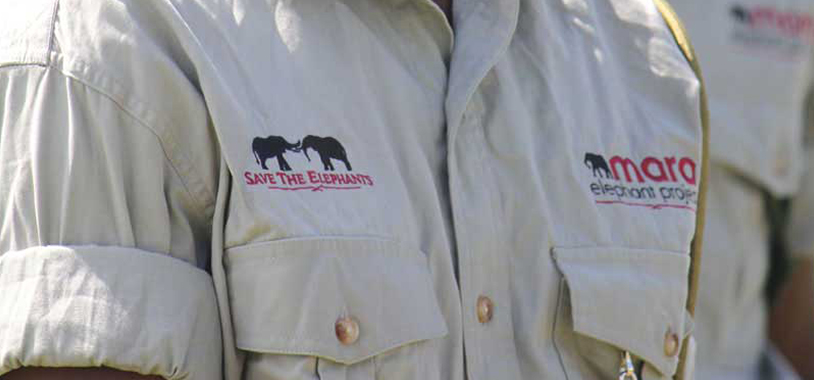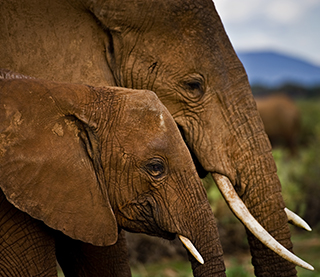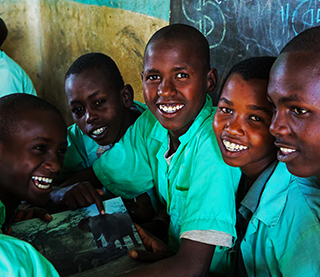
Taking Stock
National ivory stockpile destruction unique sends an important and clear message that a nation is not tolerant of wildlife crime that threatens to wipe out the African elephant.
Even in one of the world’s best-known national parks, elephants are in peril.
Save the Elephants
The Mara Elephant Project (MEP) is a two-pronged project, which aims to better understand and protect the elephants of the Mara- Serengeti ecosystem.
The research arm of the project, which STE spearheads, is working to determine elephant corridors and movement patterns, particularly those that cross borders into the Serengeti. The other arm of the project, the Quick Response Unit, is ran by the Mara Conservancy and Seiya and is on the front line of the anti-poaching war in the Mara. The project also aims to alleviate Human Elephant Conflicts, HEC, by tracking problem elephants’ movements and deploying Quick Response Teams (QRTs) to intervene during conflicts. The ultimate goal is to protect the elephants of the Mara using tracking technology that will guide long-term plans to secure elephant areas into perpetuity.

The project was founded by Save the Elephants with Richard Roberts and Susan Fehsenfeld in 2011. Marc Goss currently manages the project with Brian Heath who founded the Mara Triangle Conservation Area in 2001. Vitally, KWS has teamed up with the project’s own 32 rangers to furnish daily patrols, track collared elephants, and intercept poachers. KWS also facilitates harmonization and analysis of elephant mortality data.
Using innovative technology such as Google Earth, STE analysts are given near real-time information on the location and movement of the collared elephants. Dr Iain Douglas-Hamilton was one of the first to use radio tracking on collared elephants. Today, the technology includes ESRI software, which clarifies GPS information. There are currently 15 collared elephants being monitored by MEP, these elephants are either problem elephants (such as crop raiders) or need extra protection due to large tusks. The tracking data also helps the team understand why elephants visit certain hotspots, steak to other areas, when they visit unsafe areas, and farmed areas. The successful tracking abilities of STE is particularly impressive considering the 6000km2 area included in the Mara Elephant Project.
So far the Mara Elephant Project has arrested 88 individuals including 14 ivory dealers, 27 ivory poachers, 14 bush-meat poachers, 11 poachers with leopard skins, 2 poachers with python skins, 7 armed gang members and 2 loggers.
This represents a significant reduction in the environmental criminals in the area. The project, despite still being in early stages, has dramatically reduced the number of elephants killed each month in the area. The project also enjoys the appreciation of the local Maasai and the KWS. Save the Elephants continues its support and looks forward to celebrating future successes with MEP.
We will continue the monitoring of 13 elephants collared in connection with the Mara Elephant Tracking and Conservation Program Grant, as well as collaring 2 additional elephants. The program will use tracking data to influence policy making surrounding ecological corridors, mitigate human elephant conflict, promote transboundary cooperation within the wider ecosystem and assist anti-poaching forces.

National ivory stockpile destruction unique sends an important and clear message that a nation is not tolerant of wildlife crime that threatens to wipe out the African elephant.

Chinese superstar Li Bing Bing on why we should save elephants.

Tsavo harbors around 12,000 elephants and over 10% of Africa’s great tuskers. In the past, massive poaching, droughts and human encroachment hit this haven for elephants hard.
The fate of elephants is in the balance. The record price of ivory has attracted organised crime, rebel militias and even terrorist groups, fuelling a surge of poaching across the continent. Without the outstanding support and generosity of our donors, STE would not be able to continue securing a future for the elephants. We urgently need your support, while there is still time. You can be of vital assistance by donating to either our core funds or to any of our projects.
Over the last years our world-leading conservation efforts have been possible thanks to the dedication and generosity of loyal supporters. To join them you can donate in a number of ways:

Elephants are fast disappearing from the wild. Without urgent, international action they could be gone within a generation. The Elephant Crisis Fund provides rapid, catalytic support for the most effective projects designed to stop the killing, thwart traffickers and end the demand for ivory. 100% of all donations reach the field.

Save the Elephants is funded almost entirely by private donations. It is only through the generous support of donors that we are able to continue our important elephant conservation work. We rely entirely on funds, grants and donations from around the world, so thank you for helping us to secure a future for these fascinating creatures.

Our unique brand of conservation education encourages students to become ambassadors of their rich environment. We also give opportunities to friends around the world to help educate young minds and improve the infrastructure of their schools. Sponsor a child & help build a future for wildlife.
The fate of elephants is in the balance. The record price of ivory has attracted organised crime, rebel militias and even terrorist groups, fuelling a surge of poaching across the continent. Without the outstanding support and generosity of our donors, STE would not be able to continue securing a future for the elephants. We urgently need your support, while there is still time. You can be of vital assistance by donating to either our core funds or to any of our projects.